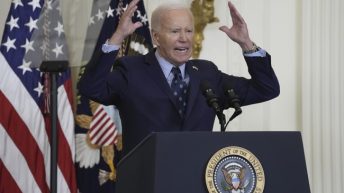Lawmakers in the Senate are pushing to overhaul a fast-growing prescription drug pricing program because they say its expansion has driven up costs for both patients and taxpayers, and they want to rein in that growth without disrupting access to medicine.
Senators from both parties have noticed that a program designed to control costs has instead ballooned into a source of higher spending, and that mismatch has created urgency on Capitol Hill. The program’s rapid growth is being blamed for distortions across the market, including price spikes and increased federal liability. Lawmakers are now debating fixes that aim to tighten rules, increase transparency, and restore incentives for affordable drug pricing.
At the heart of the debate is the balance between managing federal outlays and preserving patient access to treatments. Critics argue the program’s incentives encourage manufacturers and intermediaries to game the system, which can push costs onto Medicare and private insurers. Supporters of reform say smarter guardrails can prevent manipulation while keeping medicines available and affordable for patients who rely on them.
One concern is that the program’s structure rewards certain pricing strategies that look good on paper but raise overall spending. That creates a perverse cycle where short-term discounts or rebates lead to higher list prices, and the program ultimately pays more. Senators want to change how discounts and price signals are counted so the system doesn’t reward approaches that hike taxpayer exposure.
Transparency is another recurring theme in lawmakers’ proposals. When rebates, fees, and other complex pricing mechanisms flow through multiple middlemen, it becomes hard to track who benefits and who pays. Increased reporting and clearer accounting rules would let regulators and the public see whether savings promised by industry are reaching patients or getting absorbed by intermediaries.
Some reform ideas focus on tightening eligibility and enrollment rules so the program only applies where it reduces costs meaningfully. That could mean stricter thresholds for participation, clearer definitions of qualifying price changes, or sunset provisions that force periodic review. These measures aim to prevent program expansion from outpacing its original purpose.
Lawmakers also want to protect patients from sudden price increases that can occur when incentives shift. Proposals include guardrails to prevent manufacturers from exploiting loopholes that allow abrupt list-price hikes while offering rebates that benefit intermediaries. The goal is to make patient out-of-pocket costs and total system spending move in the same direction rather than pulling apart.
There’s a push to realign incentives across the supply chain so pharmacies, insurers, and manufacturers all have reasons to keep prices reasonable. That might mean rethinking how discounts are applied and who qualifies for financial benefits tied to a drug’s list price. By designing rules that reward genuine price reductions, lawmakers hope to lower both patient bills and program liabilities.
Budget planners in the Senate are watching potential reforms closely because any changes could alter projected federal spending on prescription drugs. Some proposals aim to cap federal exposure or require budget-neutral adjustments elsewhere to pay for reforms. Others propose targeted savings from reducing waste and closing loopholes so the program’s fix does not create new deficits.
Stakeholders outside the Capitol are weighing in as well, from patient advocacy groups worried about access, to industry players defending current practices, to think tanks offering policy models. The conversation reflects competing priorities: controlling costs, maintaining innovation, and ensuring patients get the therapies they need. That mix of voices makes a compromise possible but tricky.
Senators say they want solutions that are surgical rather than sweeping, correcting specific flaws while leaving the program’s core intent intact. They’ve signaled openness to a suite of changes—technical fixes, reporting requirements, and targeted limits—rather than a single overhaul that could destabilize the market. The aim is to restore balance so taxpayers and patients both benefit.
As debate continues, lawmakers will be weighing legislative language that could change how savings are calculated, who pays, and how the program grows in the future. Any final package will need to thread the needle: it must reduce incentives for gaming and lower costs where possible, without interrupting access to critical medicines. For the Senate, the challenge is to lock in reforms that preserve value and accountability for years to come.





Add comment